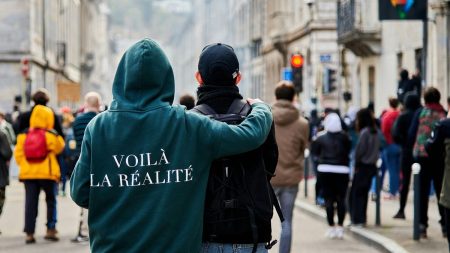Tourists have been flocking to catch a glimpse of the new 4 km fissure that has opened up on the Reykjanes Peninsula in Iceland. This eruption marks the sixth time in three months that a volcano on the peninsula has erupted, spewing red lava through the fissure. The eruption began after a series of strong earthquakes, with the lava flow not heading towards the town of Grindavik which was previously largely evacuated after being dormant for 800 years. Roads around the volcano have been closed to protect people from toxic gas fumes with the Blue Lagoon thermal spa, a top tourist attraction in Iceland, being evacuated and closed as a precaution. Despite the eruption, Keflavik International Airport remains open and operational.
The Icelandic Meteorological Office updated the public on the eruption stating that the seismicity is fairly stable and the main activity is at the northern end of the eruptive fissure. Magnús Tuma Guðmundsson, a geophysicist, suggested that the eruption may have reached its peak and will likely start to subside, with Grindavik not in immediate danger. Grindavik, a town of 3,800 people, has once again been evacuated as a precaution due to the eruptions. Visitors are warned to watch from a safe distance and avoid the area as it is not intended as a tourist attraction. Despite the eruptions in the area, nearby Keflavik Airport remains operational with flights arriving and departing as scheduled.
Iceland has experienced frequent volcanic activity over the years and is highly prepared for such events. The airport remains operational despite the eruption as ash released into the atmosphere from volcanic eruptions can pose a serious hazard to air travel. However, Icelandic authorities and the public are well-prepared and experienced in dealing with volcanic activities. Current travel advisories for Iceland warn against travel to Grindavik and the eruption site, but otherwise, Iceland is considered a safe destination to visit. Airlines and holiday companies are operating as normal without any restrictions.
The Blue Lagoon geothermal spa, one of Iceland’s biggest tourist attractions, was evacuated and remains closed following the eruption. Management at the spa is reassessing the situation to determine when it will be safe to reopen. Travellers are advised to stay informed of the latest updates from the Icelandic Met Office and Safe Travel Iceland regarding travel to the region. While there have been concerns about how the eruption may impact travel, nearby Keflavik International Airport has not experienced any disruptions and flights are operating normally. Overall, Iceland is still considered a safe destination for travellers with proper precautions in place.
Tourists who had gathered to witness the eruption have described it as a majestic and incredible sight, with some expressing awe at the lava flows. However, authorities have reiterated the importance of keeping a safe distance and avoiding the area for safety reasons. Iceland’s Civil Protection and Emergency Management have emphasized that the eruption is not a tourist attraction and should be observed from afar. Despite the evacuation of the Blue Lagoon and the surrounding area, there have been no major disruptions to air travel in the region during these recent eruptions. While travellers are advised to exercise caution and respect local restrictions, overall, Iceland remains a safe destination with authorities well-prepared to handle volcanic events.









